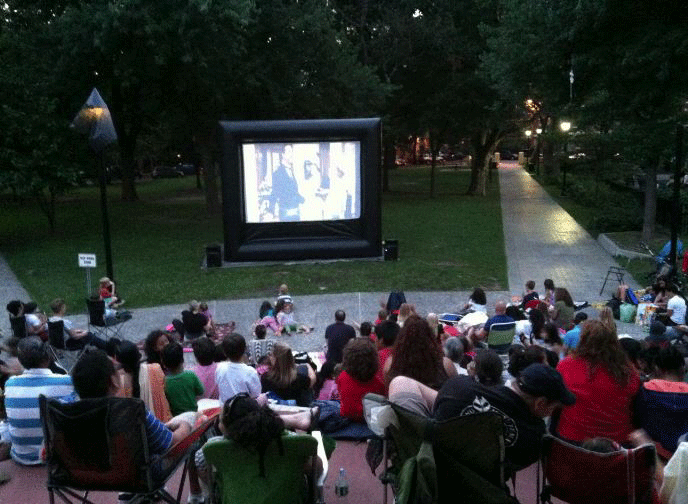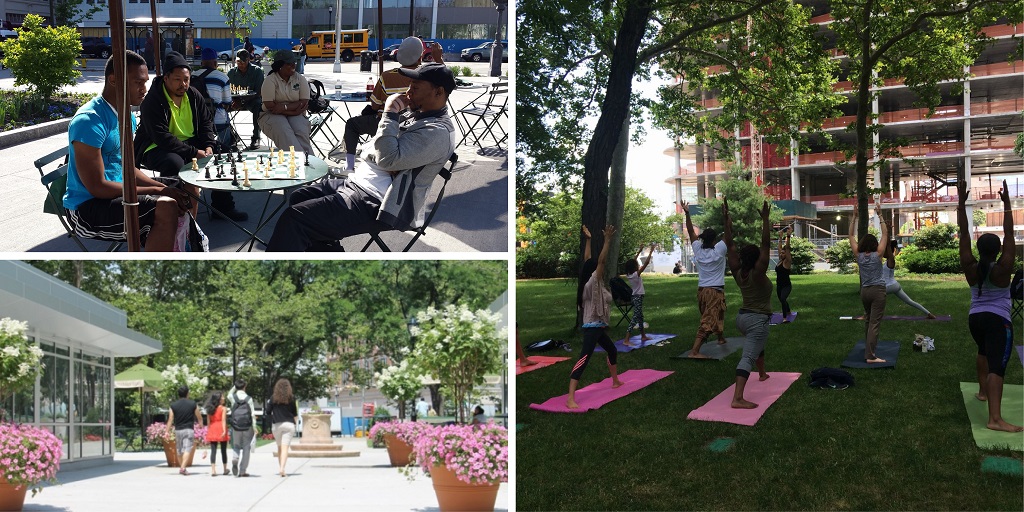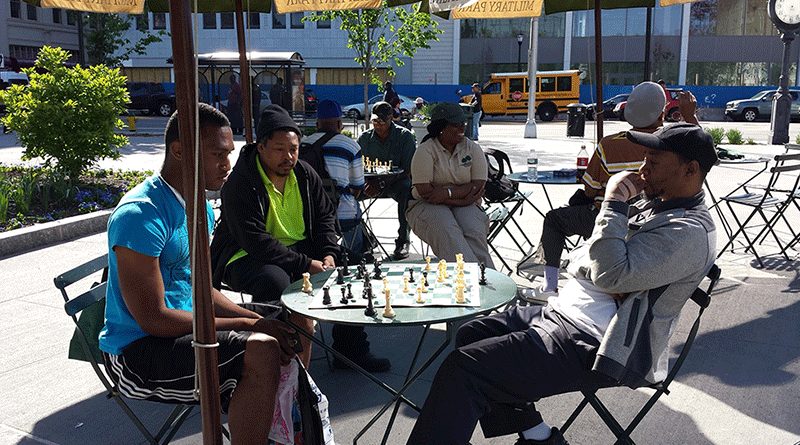This is Part 1 of our series on how public spaces contribute to transit-oriented community life. In Part 2: Creating Public Spaces for Transit-Oriented Communities, we explore ways to create inclusive and well-functioning public spaces in transit-friendly locations.
Transit corridors connect us to places far and wide, but the quality of place is what makes us stay. Active and safe public spaces are an essential part of this calculus. They contribute to the vitality of a community and offer numerous benefits to communities and their residents. They encourage chance encounters, are the locus of community-building activities, and allow people to have new experiences. They promote health and mental well-being, improve safety, and support redevelopment. They provide those who are familiar with a location, as well as first-time visitors, with a sense of belonging. Without active public spaces, people may lack the opportunity to engage with fellow community members, especially when they spend most of their weekdays away at work.
Both the transit system and public spaces gain when they are seamlessly integrated with each other, creating a place that is connected both locally and with the wider world. To meet local needs, a wide array of stakeholders—residents and business owners, planners and developers—must collaborate to create public spaces that offer attractive amenities and desirable recreational options. For example, communities may focus on improved safety, accessible gathering areas, ample seating, and a place where both young and old feel welcome. By meeting locally-defined needs, public spaces can cultivate a stronger quality of life at a relatively small cost, better connect transit to the community in which it is located, and help create vibrant transit-oriented places.
Here are four ways public spaces can make our lives better:
Improve Health

Communities can encourage residents to walk or bike by providing safe and accessible public spaces designed to serve their needs. A growing body of literature supports the general notion that proximity to parks and recreational settings encourages greater physical activity. Safety, aesthetics, amenities, maintenance, and proximity all contribute to how effectively public space supports physical activity.
When community spaces provide users with easy access to, and experiences with, nature, the effects can be even greater. One study published by the World Health Organization (WHO) found that increased time spent in green public spaces leads to improved mental health, decreased stress levels, improved performance with cognitive tasks, improved pregnancy outcomes, and reduced risk of cardiovascular failure, obesity, and Type 2 diabetes. Green public space can include spaces with natural surfaces or settings, trees or gardens, ponds or other bodies of water. Exercise in green or natural places is especially helpful for those who spend a lot of time commuting or sitting at a desk job, and studies have shown that exercising while in green environments can be emotionally restorative.
Provide Equitable Access
In some communities, it may be a challenge to identify opportunities that support exercise among residents, particularly in low-income communities that may lack public spaces. Community members without access to exercise—due to a lack of facilities, economic constraints, or both—can be at higher risk of health problems associated with a sedentary lifestyle. According to the Trust for Public Land, cities that can afford to expand access to public space should do so in a way that allows every resident to live within a 10-minute walk of these assets. Equally important, designs for public spaces should optimize usage for fitness and accessibility for both pedestrians and bicyclists.

As part of their overall planning efforts, communities can create and support public spaces that allow users to gather, relax, enjoy cultural events and the arts, and exercise. They may wish to offer free fitness classes in public spaces to both improve public health and to help bridge the economic divide, or host regular and special events such as farmers markets or summer movies or concerts and various ethnic celebrations, such as those offered in Jersey City parks this summer.
Manage Community Assets
When communities engage in the management of their public spaces—through placemaking efforts, as well as routine operations and maintenance—public spaces often become activated. This means life and buzz are brought into the space via temporary or permanent art installations, pop-ups or classes.
Such efforts may also contribute to an area’s desirability and help sustain redevelopment over time. Improving access to open space is one factor that may contribute to increases in property values and rent. Managing the effects of community change is vital to sustaining improvements and making them available to all users. Equitable transit-oriented development (eTOD) practices—inclusionary zoning, affordable housing subsidies to developers, and engaging with communities in the planning process—should be part of a community’s overall TOD strategy. See Strategies to Promote Equitable Transit-Oriented Development and Learning from National eTOD Models for more information.
Increase safety
The presence of more people and a dedicated management staff can help create safer spaces. The urbanist Jane Jacobs famously coined the “eyes on the street” concept to describe the relationship between oversight and safety in public spaces. People act as an informal surveillance or support system; the presence of more people can help to create an atmosphere of safety. Deterring crime in public spaces can lead to a progressive cycle of positive outcomes and help to reduce crime rates. In some communities, support for more “eyes on the park” comes through an organized Neighbor Park Watch program, such as Park Watch sponsored by the Los Angeles County Sheriff’s Department.

Create Public Spaces That Work
What makes a great public space? William H. Whyte, a contemporary of Jane Jacobs and a public space visionary, explored this very question. In the 1970s, he began investigating public spaces and shared some insights and observations about them through the film and book, The Social Life of Small Urban Spaces.
Mr. Whyte observed that most public spaces work when designed with the user in mind and with the goal of keeping them comfortable and occupied. He identified some key factors needed for successful spaces, which include ample seating such as movable chairs or steps, a proper balance of sun and shade, easy access and visibility from the street level (specifically no more than three feet above or below street level), food vendors, tree canopies, gardens, and sculptures.
I end then in praise of small spaces. The multiplier effect is tremendous. It is not just the number of people using them, but the larger number who pass by and enjoy them vicariously, or even the larger number who feel better about the city center for knowledge of them. For a city, such places are priceless, whatever the cost. They are built of a set of basics and they are right in front of our noses. If we will look.” – William H. Whyte, 1980, The Social Life of Small Urban Spaces.
Achieving all of this can be a tall order, but one successful New Jersey example is Military Park in Newark. Since its renovation and reopening in 2014, Military Park has offered users access to a green respite and a host of amenities in the state’s largest city. The planners of Military Park drew inspiration from Whyte’s work which continues to motivate those who seek to create such public spaces.
Want to learn more about how to create public spaces that work? In Creating Public Spaces for Transit-Oriented Communities, we discuss strategies residents, planners, and developers can use to create and fund such spaces.

